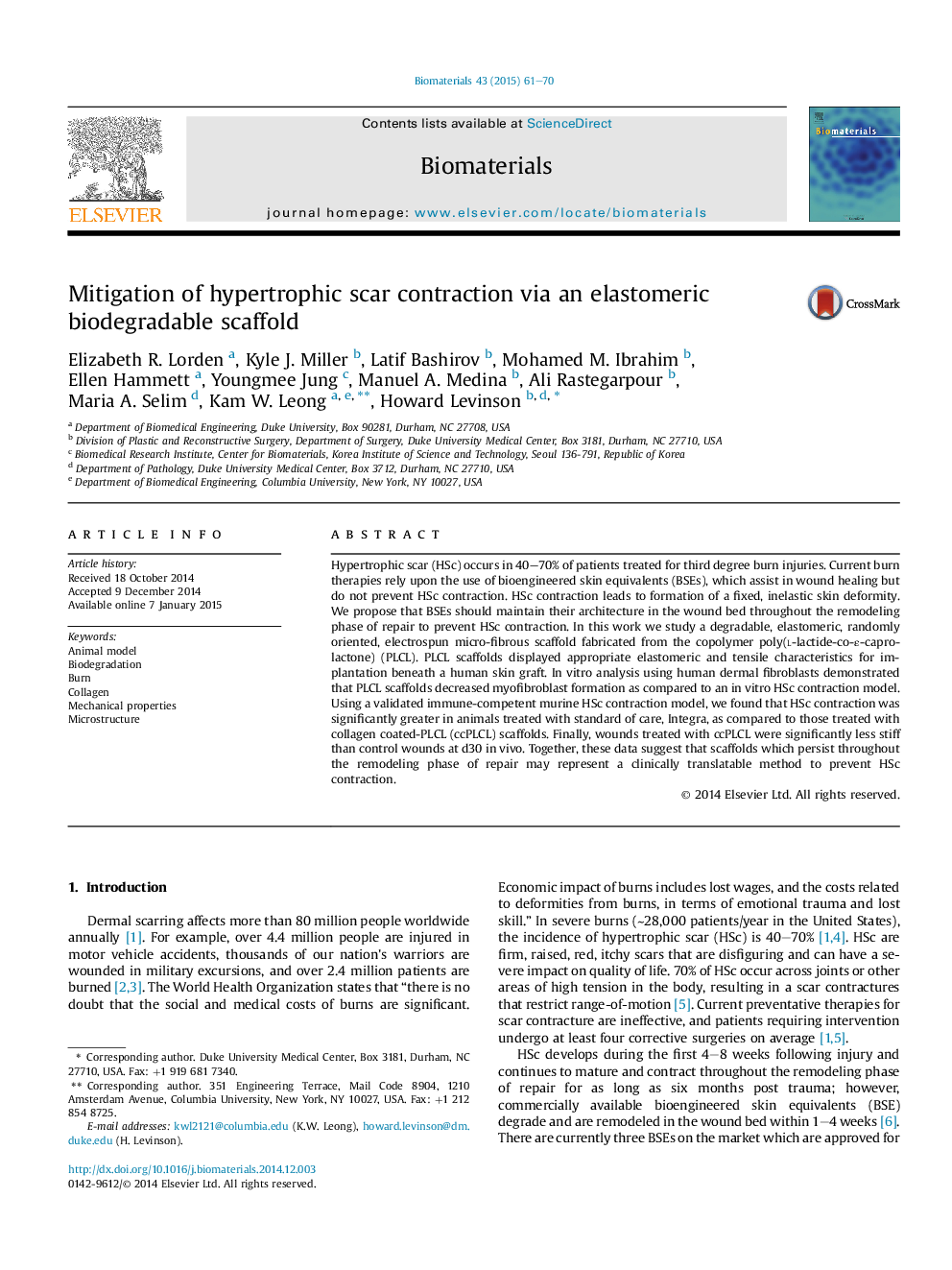| کد مقاله | کد نشریه | سال انتشار | مقاله انگلیسی | نسخه تمام متن |
|---|---|---|---|---|
| 5767 | 428 | 2015 | 10 صفحه PDF | دانلود رایگان |
Hypertrophic scar (HSc) occurs in 40–70% of patients treated for third degree burn injuries. Current burn therapies rely upon the use of bioengineered skin equivalents (BSEs), which assist in wound healing but do not prevent HSc contraction. HSc contraction leads to formation of a fixed, inelastic skin deformity. We propose that BSEs should maintain their architecture in the wound bed throughout the remodeling phase of repair to prevent HSc contraction. In this work we study a degradable, elastomeric, randomly oriented, electrospun micro-fibrous scaffold fabricated from the copolymer poly(l-lactide-co-ε-caprolactone) (PLCL). PLCL scaffolds displayed appropriate elastomeric and tensile characteristics for implantation beneath a human skin graft. In vitro analysis using human dermal fibroblasts demonstrated that PLCL scaffolds decreased myofibroblast formation as compared to an in vitro HSc contraction model. Using a validated immune-competent murine HSc contraction model, we found that HSc contraction was significantly greater in animals treated with standard of care, Integra, as compared to those treated with collagen coated-PLCL (ccPLCL) scaffolds. Finally, wounds treated with ccPLCL were significantly less stiff than control wounds at d30 in vivo. Together, these data suggest that scaffolds which persist throughout the remodeling phase of repair may represent a clinically translatable method to prevent HSc contraction.
Journal: Biomaterials - Volume 43, March 2015, Pages 61–70
